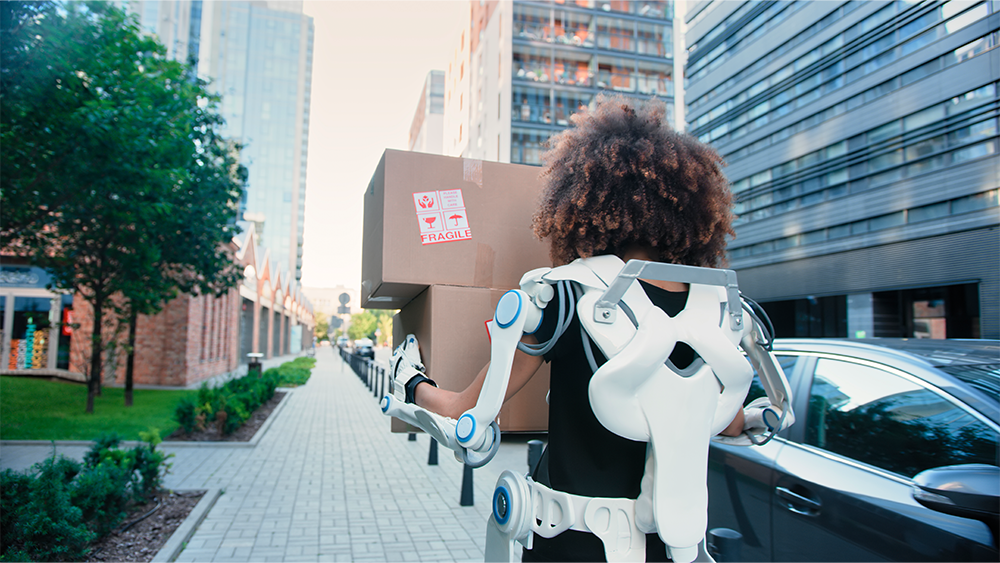Extra brainwork can offset advantage of wearing exoskeletons for labor

Increased cognitive demands in the workplace, often associated with new technologies or automation, can offset the mechanical advantages of wearing a low-back exoskeleton, a wearable device that is aimed to reduce or redistribute biomechanical spine loading associated with heavy manual work. These findings from researchers at Texas A&M University and The Ohio State University are published in the latest issue of Applied Ergonomics.
The research team includes Ranjana Mehta, associate professor in the Wm Michael Barnes ’64 Department of Industrial and Systems Engineering and director of the NeuroErgonomics Laboratory; Yibo Zhu, graduate student in industrial and systems engineering and member of the neuroergonomics laboratory; Eric Weston, graduate research associate in industrial systems engineering at Ohio State; and William Marras, professor of integrated systems engineering, neurological surgery, orthopedics, and physical medicine and rehabilitation at the Spine Research Institute at Ohio State.
“This is the first study looking into the brain as a user was performing a lifting task wearing a back exoskeleton,” Mehta said. “We were able to document the neurocognitive ‘cost’ of wearing an exoskeleton and identify adaptation strategies adopted by users over time to mitigate the cognitive risks introduced by the exoskeleton. We were also able to demonstrate the utility of using ambulatory brain imaging and connectivity analysis during this highly movement-oriented physical task.”
The team recruited healthy adults, both men and women with no history of lower back injuries, to participate in the study that required extensive lifting, both with and without the help of a low back exoskeleton.
Participants attended two sessions, one session focused on performing the lifting tasks while wearing an exoskeleton and another session without the exoskeleton. Each participant was fitted with a mechanical exoskeleton attached to their chest and legs while they repeatedly lifted a medicine ball for 30 minutes. After a similar amount of rest break, they were then asked to perform the same task with the help of an exoskeleton but were also asked to simultaneously perform a mental task: subtract 13 from a number between 500 and 1,000 each time they lifted the ball.
These tasks allowed the researchers to measure spinal load using advanced EMG (electromyographic)-assisted biomechanical modeling and monitor functional brain activation during the task using an ambulatory brain imaging device called functional near-infrared spectroscopy. Integrating traditional biomechanical/ergonomics and ambulatory neuroimaging techniques allowed them to assess the neuroergonomic fit of human-exoskeleton interaction.
The results show that the exoskeleton did not significantly reduce spinal compression loads and had a marginal practical benefit in reducing spine shear loads, compared to not wearing an exoskeleton. However, the “cost” of wearing the exoskeleton was captured via the neuroergonomic assessment. Compared to the no exoskeleton condition, the use of exoskeletons during lifting recruited additional regions of the brain that are typically involved in regulating alertness and vigilance.
The study also found that when each individual was tasked with solving a math problem to accompany the lifts, to simulate external cognitive demands on workers, they lost whatever biomechanical benefits were offered by the exoskeleton in the first place.

